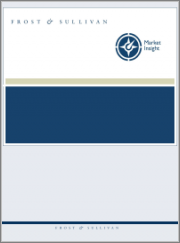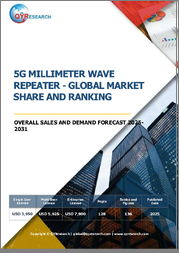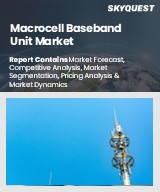
|
시장보고서
상품코드
1368214
동남아시아 국가의 5G 성장 기회5G Growth Opportunities in Southeast Asian Countries |
||||||
5G 솔루션 상용화로 5G 보급 촉진, 하지만 5G 가치 증명하려면 시간이 중요
전체적으로 아세안 지역의 5G 총 수익은 2022년 16억 4,000만 달러에서 2027년 74억 3,000만 달러로 증가하여 35.3%의 CAGR을 기록할 것이며, 이 기간 동안 5G 연결성이 5G 수익의 주요 기여 요인으로 작용할 것으로 예상됩니다.
소비자 부문에서는 매출 성장이 정체되기 시작했습니다. 기업용은 모바일 사업자들이 성장을 우선시하기 시작했고, 일부 시장(싱가포르와 태국)은 다른 시장보다 앞서 나가고 있습니다. 싱텔의 성공은 기업이 애플리케이션 프로그래밍 인터페이스(API)를 통해 연결하고 새로운 솔루션을 출시하는 데 필요한 모든 실현 가능한 기술을 통합함으로써 모바일 사업자가 기업 부문에 가치를 창출할 수 있는 수익 창출 기회가 있다는 사실을 입증합니다.
아시아태평양의 기타 지역 통신사업자들이 경험한 것처럼, 5G를 통한 고객 경험의 향상, 고객 중심 전략, 기존 서비스(방송 포함)를 통한 새로운 비지니스 모델, 그리고 새로운 서비스(예: 메타버스 기반)는 아세안 통신사업자들이 나아가야 할 길일 수 있습니다. 싱가포르와 태국을 제외한 나머지 국가들은 주파수 할당 지연, 낮은 5G 보급률 등 5G 여정에서 직면한 문제로 인해 5G에서 뒤쳐져 이 분야에 대한 투자가 많지 않습니다.
5G 매출은 전체적으로 CAGR 성장을 기록했지만, 필리핀과 인도네시아 등 일부 시장에서는 5G가 도입에 어려움을 겪고 있어 추가 투자에 영향을 미치고 있으며, 5G 수익 창출의 어려움은 5G 네트워크 장비의 높은 비용을 정당화하는 데 도움이 되지 못하고 있습니다. 또한,(팬데믹 기간 동안 봉쇄로 인한) 제한이 줄어든 5G는 2023년 이후 더 저렴한(Wi-Fi 핫스팟), 더 나은(파이버) 기술과 경쟁해야 합니다. 기술 개발은 필수적이지만, 발생된 비용을 수익화하는 것은 특히 이해관계자와 투자자의 동의를 유지하기 위해 더욱 중요합니다.
목차
전략적 원칙
- 성장이 어려운 이유 - The Strategic Imperative 8(TM) : 성장을 막는 요인
- The Strategic Imperative 8(TM)
- 5G 업계에 대한 전략적 원칙의 영향
- Growth Pipeline Engine(TM)을 촉진하는 성장 기회
성장 기회 분석
- 분석 범위
- 세분화
- 주요 경쟁사
- 성장 지표
- 성장 촉진요인
- 성장 억제요인
- 예측 가정
- 매출 예측
- 국가별 매출 예측
- 매출과 예측 분석
- 가격 동향과 예측 분석
- 경쟁 환경
- 매출 점유율
- 매출 점유율 분석
성장 기회 분석 : 말레이시아
- 성장 지표
- 매출 예측
- 예측 분석
성장 기회 분석 : 인도네시아
- 성장 지표
- 매출 예측
- 예측 분석
성장 기회 분석 : 태국
- 성장 지표
- 매출 예측
- 예측 분석
성장 기회 분석 : 필리핀
- 성장 지표
- 매출 예측
- 예측 분석
성장 기회 분석 : 베트남
- 성장 지표
- 매출 예측
- 예측 분석
성장 기회 분석 : 싱가포르
- 성장 지표
- 매출 예측
- 예측 분석
성장 기회 유니버스
- 성장 기회 1 : 기업 및 소비자 부문용 5G 수익화 솔루션
- 성장 기회 2 : 기업 부문용 Beyond Connectivity 솔루션
- 성장 기회 3 : 5G와 Beyond를 위한 새로운 비용 구조
다음 스텝
ksm 23.11.02The Commercialization of 5G Solutions Drives 5G Adoption, But Time is Critical for 5G to Prove its Worth
Overall, the total 5G revenue in the ASEAN region will increase from $1.64 billion in 2022 to $7.43 billion in 2027, at a CAGR of 35.3%. 5G revenue will remain driven by 5G connectivity, the main contributing factor during this period.
On the consumer side, revenue growth has started to stagnate. On the enterprise side, mobile operators have started to prioritize growth, with some markets (Singapore and Thailand) more advanced than others. Singtel's success is a testament to the fact that there is a monetizable opportunity for mobile operators to offer value to the enterprise segment by bringing together all the necessary enabling technologies for enterprises to link up to via application programmable interfaces (API) and launch new solutions.
As mobile operators elsewhere in Asia-Pacific have experienced, 5G to drive customer experience, customer-centric strategies, new business models with existing services (including broadcasting), and new services (such as metaverse-based) may be the way forward for mobile operators in ASEAN. Apart from Singapore and Thailand, other countries in the region have not invested much in these areas simply because they have fallen behind with 5G due to challenges upon embarking on their 5G journey, for example, with delayed spectrum allocation and low 5G adoption.
Although 5G revenue registered CAGR growth overall, in some markets, like the Philippines and Indonesia, 5G faces adoption challenges that impact further investment. Difficulties in 5G monetization are not helping justify the high cost of 5G network equipment. Furthermore, with fewer restrictions (from lockdowns during the pandemic), 5G must compete with cheaper (Wi-Fi hotspots) and better (fiber) technologies from 2023. Technology development is essential, but monetizing the cost incurred is even more critical, especially to maintain stakeholder and investor buy-in.
Table of Contents
Strategic Imperatives
- Why is it Increasingly Difficult to Grow?The Strategic Imperative 8™: Factors Creating Pressure on Growth
- The Strategic Imperative 8™
- The Impact of the Top 3 Strategic Imperatives on the 5G Industry
- Growth Opportunities Fuel the Growth Pipeline Engine™
Growth Opportunity Analysis
- Scope of Analysis
- Segmentation
- Key Competitors
- Growth Metrics
- Growth Drivers
- Growth Restraints
- Forecast Assumptions
- Revenue Forecast
- Revenue Forecast by Country
- Revenue Forecast Analysis
- Pricing Trends and Forecast Analysis
- Competitive Environment
- Revenue Share
- Revenue Share Analysis
Growth Opportunity Analysis: Malaysia
- Growth Metrics
- Revenue Forecast
- Forecast Analysis
Growth Opportunity Analysis: Indonesia
- Growth Metrics
- Revenue Forecast
- Forecast Analysis
Growth Opportunity Analysis: Thailand
- Growth Metrics
- Revenue Forecast
- Forecast Analysis
Growth Opportunity Analysis: Philippines
- Growth Metrics
- Revenue Forecast
- Forecast Analysis
Growth Opportunity Analysis: Vietnam
- Growth Metrics
- Revenue Forecast
- Forecast Analysis
Growth Opportunity Analysis: Singapore
- Growth Metrics
- Revenue Forecast
- Forecast Analysis
Growth Opportunity Universe
- Growth Opportunity 1: 5G Monetization Solutions for the Enterprise and Consumer Segments
- Growth Opportunity 2: Beyond Connectivity Solutions for the Enterprise Segment
- Growth Opportunity 3: New Cost Structures for 5G and Beyond
Next Steps
- Your Next Steps
- Why Frost, Why Now?
- List of Exhibits
- Legal Disclaimer



















